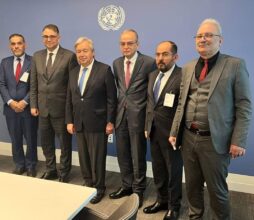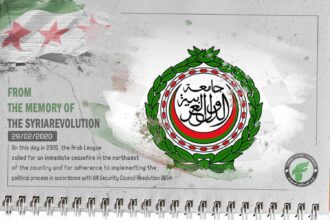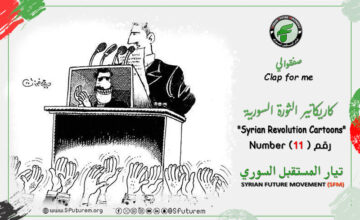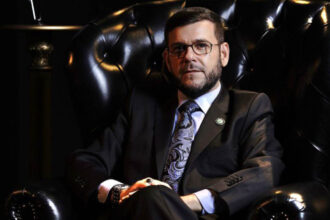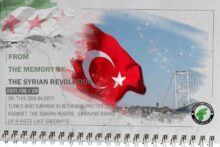Pluralism or Autonomy? What Syrian Media Needs!

The importance of media in the Syrian context is evident through its direct impact on people, where media can be more powerful than combat battles due to its influence on people’s awareness through what it promotes. Media can break barriers and reach minds and hearts. Revolutionary media is the voice and noise of the movement, thus it is imperative for journalists to convey the truth in a timely manner to the elites, the international community, and primarily to the Syrian people. Despite the challenges, the importance of media in the Syrian context has played a noble role in conveying the events of the Syrian revolution and documenting the crimes of the Syrian regime.
Modern Contemporary Media:
Contemporary media is the new form of media reliant on a single intermediary: the internet and digital means and modern technology to transfer media material and communicate with the audience, instead of relying on paper and satellites used in traditional media. Digital media includes several characteristics:
- Interactivity, allowing the recipient to interact and express their opinion.
- Time independence, as digital media does not restrict the recipient to specific times.
- Flexibility through access to the user via various means such as computers and smartphones.
- Placelessness and globality, transcending all constraints of time and place.
- Multimedia usage involving sound, image, text, and both 2D and 3D graphics.
- User-focused, as the recipient chooses the content they watch.
- Archiving and storage for later retrieval.
Examples of digital media content include eBooks, articles and blogs, video clips on platforms like YouTube, and illustrations and graphics.
Independent Media:
In many advanced countries, available media means include government-owned radio and television stations and newspapers, even if the state does not overtly control these mediums. These mediums may have strong ties to the government or be influenced by government forces. In such cases, it is often difficult to distinguish between truly independent media and those influenced by the government. For instance, there might be privately owned newspapers adopting specific stances, tackling issues in a biased manner, while government-owned newspapers might publish specific news serving government interests.
On the other hand, “alternative media” refers to media outlets that serve as alternatives to commercial or government-owned media. Supporters of alternative media note that mainstream media is biased, and while alternative media sources can also be biased, their biases tend to differ significantly from mainstream media, thus being “alternative.”
Opinion journalism tends to become a component of many alternative media outlets. Since the term “alternative” implies self-marginalization, some media now prefer the term “independent” to “alternative” to denote independence from government or influential groups.
In the Arab context, the discussion about the independence and objectivity of media is significant, as it is preferable for media to be independent of government interventions, political pressures, or financial interests. However, media should also be objective and strive to present narratives objectively, which may be more achievable with traditional media than with contemporary and alternative media.
Media Pluralism:
The diversity of media channels is crucial in the media landscape, carrying several benefits and positives impacting the audience and society at large, including:
- Providing diverse information, with multiple channels serving as sources for varied and multi-dimensional information, allowing the audience to choose from a variety of programs and content suitable for their interests.
- Facilitating access to information thanks to the diversity of channels, thus allowing the audience to easily access information and news from multiple sources, whether through television, radio, newspapers, or digital media.
- Comprehensive coverage provided by multiple channels through diverse biases, contributing to a clearer overall picture.
- Variety of programs and content meeting the needs of different age groups and interests.
- Enhancing media freedom, allowing journalists and media content to convey news and issues in a competitive, more objective manner.
However, media pluralism can also have drawbacks, such as distraction and negative impacts of advertising. Nonetheless, the diversity of channels remains effective in meeting audience needs and providing diverse and reliable information.
Importance of Traditional Media:
Traditional media retains its special status, deriving news from reliable sources with minimal conditions for news and narrative, despite challenges from technology and changing audience behavior. Traditional media’s advantages include credibility as a reliable source for referencing, along with the long-lasting impact of messages which remain in people’s minds for an extended period.
Despite the drawbacks of traditional media, such as unidirectional communication lacking interaction between the sender and recipient, lesser transmission of information compared to new media, higher costs compared to modern media which may force biases towards local or international power centers, and lack of immediacy in responding to developments, the public still relies on traditional media and considers it more credible than alternative media! Herein lies its importance and necessity, and it can play a significant role alongside modern media.
Conclusion:
From all the above, it is clear that media is essential for conveying news and preventing any authority from monopolizing the public’s ignorance of its actions. It is
also crucial for delivering the voice of reality as it is.
It also appears that whether media is traditional or modern alternative, it is difficult to rid it of bias. Thus, the solution for positive use of media is not to combat bias—which seems impossible—but to ensure it is diverse and varied, allowing the delivery of news through multiple interpretations, enabling the public to balance and choose between them.
Therefore, at the Media Office of the Syrian Future Movement, we recommend, according to our vision and approach, the following:
- Protect media freedoms, and that the regulation of the media sector should be directed towards protecting press freedom and freedom of expression to be primarily diverse and pluralistic, as well as balancing the public’s right to access information with journalists’ freedom to report the news.
- Ethical regulation by setting ethical standards for media, such as not publishing false information or defaming individuals.
- Diversity and balance, which alone meet the needs of different audiences.
- Combatting distortion and misinformation through innovative mechanisms to counter the publication of misleading or false information, which can be achieved through laws criminalizing false publication, and benefiting from the experiences of advanced countries in this regard.
- Encouraging competition among media outlets and fostering innovation in this field.
Finally, regulation must be balanced between protecting the public’s rights and press freedom and contributing to societal development.
Ibrahim Mustafa
Media Office
Research and Studies Department
Articles
Syrian Future Movement (SFM)
